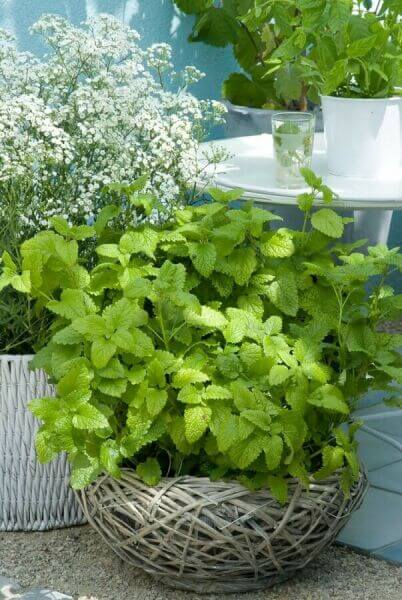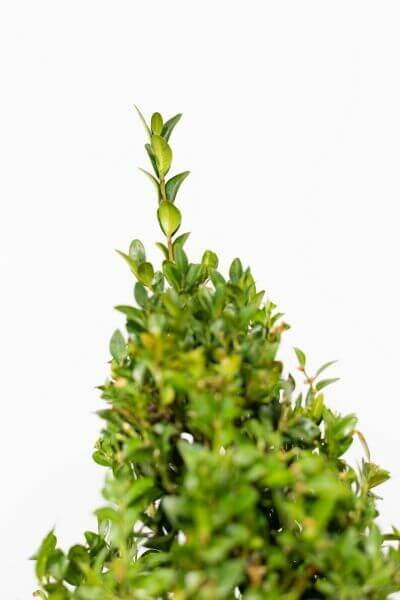Hedge Plants For Summer Blooms
Hedge Plants For Summer Blooms
Blog Article
Best Hedging Plants For Full Sun
Boost your garden's allure with rich hedge varieties such as Yew (Taxus), Thuja, Laurel, Photinia, and Bamboo, celebrated for their structural integrity and environmental advantages.
Yew and Thuja offer evergreen protection and winter season resilience, while Laurel uses rapid growth and broad, aromatic leaves.
Photinia adds seasonal appeal with its lively red foliage, and Bamboo provides a low-maintenance, serene atmosphere.
These hedges improve air quality, lower noise, and produce tranquil, personal spaces.
Appropriate planting, spacing, and maintenance make sure vigorous growth and eco-friendly harmony.
Explore how these lush ranges can raise your garden's appeal and wellness.
Key Takeaways
Transform Your Garden With Lush Hedge Ranges
- Select Yew for its thick, evergreen development and unrivaled durability.
- Go with Laurel for its fast development and broad leaves, ensuring fast privacy.
- Select Photinia for its vibrant seasonal foliage, which turns a striking dark red.
- Use Bamboo for a low-maintenance, winter-hardy hedge with visual appeal.
- Space plants 2-3 per meter and prune regularly for optimal development and health.
Popular Hedge Plants
When changing a garden with lavish hedge varieties, it's vital to think about popular hedge plants such as Yew, Thuja, Laurel, and Photinia due to their special attributes and advantages.
Yew (Taxus) is extremely respected for its longevity and thick, green development, making it a prime option for sustaining landscapes.
Thuja is noted for its evergreen foliage and robust winter season durability.
Photinia includes seasonal vibrancy with red leaves that darken gradually, developing vibrant visual appeal.
Laurel uses quick development and fragrant, broad leaves, ideal for quick privacy.
Additionally, Bamboo is an exceptional option for atmosphere, using a low-maintenance, winter-hardy alternative that improves the garden's aesthetic with its stylish, swaying canes.
These choices deal with a variety of horticultural needs and preferences.
Benefits of Garden Hedges
Garden hedges offer a multitude of advantages, making them a valuable addition to any landscape. These natural barriers are affordable to implement and supply considerable wind protection, boosting air circulation and adding to noise reduction. The dense foliage of hedges like Thuja and Beech guarantees privacy by blocking visibility, developing a peaceful and secluded environment.
Hedges also play an important role in microclimate guideline, providing a steady environment that fosters plant development and reduces temperature level changes. Their intricate leaf structures filter toxins, improving air quality and contributing to a much healthier garden ecosystem.
Furthermore, hedges master sound decrease, taking in and deflecting acoustic waves to lower ambient noise levels. This double functionality of offering both visual and acoustic personal privacy enhances the general tranquility and aesthetic appeal of any garden.
Planting and Upkeep Tips
For an effective hedge, careful preparation of the planting area is crucial. Guarantee the soil has correct pH and drainage to support strong root advancement.
Space the plants properly for the selected types. Water the hedge frequently throughout its preliminary development stage, adjusting as required with seasonal changes.
Carry out a systematic bug control and disease avoidance technique, using natural or chemical treatments when necessary. Routinely check for aphids, mites, and fungal infections.
Apply mulch to retain moisture and reduce weeds. Seasonal pruning promotes thick development and air blood circulation, essential for plant health.
Following these standards will assist you cultivate a vibrant, properly maintained hedge that enhances the charm of your garden.
Spacing and Trimming Standards
Spacing and Cutting Standards
Correct spacing and cutting are vital for cultivating healthy, visually appealing hedges. Adequate spacing ensures each plant receives adequate nutrients, light, and air flow.
Follow these standards for ideal hedge upkeep:
- Spacing: Position hedge plants 2-3 plants per meter to encourage robust growth.
- Pruning Techniques: Routine pruning is vital for maintaining preferred hedge height and shape. Cut brand-new development in summer and cut back older wood during winter season.
- Seasonal Care: Adjust trimming approaches and schedules according to seasonal requirements to make sure plant health.
- Hedge Height: Regularly screen and cut to maintain the preferred hedge height and accomplish uniform aesthetic appeals.
Following these steps will guarantee your hedge prospers, enhancing both the appeal and performance of your garden.
Selecting the Right Hedge
Selecting the Right Hedge
Selecting the proper hedge involves evaluating aspects such as fully grown height, foliage density, and environmental strength. Effective hedge plant choice needs understanding each species' development characteristics and site-specific adaptability.
For instance, Yew (Taxus) provides excellent durability and dense growth, while Thuja is notable for its winter season durability. Additionally, thinking about maintenance requirements is crucial; fast-growing types like Laurel or Privet demand routine trimming, whereas low-maintenance alternatives like Bamboo or Ivy might be preferable for those seeking very little upkeep.
Environmental aspects such as soil type, light availability, and wetness conditions should likewise guide the selection procedure. This cautious technique ensures the picked hedges will thrive, offering both aesthetic and practical advantages to the garden landscape.
Shipment and Planting Guidance
To guarantee your hedge plants thrive, they ought to be provided by specialized carriers and planted quickly upon arrival.
Follow these vital actions for successful planting:
- Soil Preparation: Enrich the soil with natural matter to enhance drain and nutrient content.
- Planting Depth: Produce a trench two times the width and equivalent to the depth of the root ball.
- Watering Strategies: Water thoroughly after planting, keeping the soil consistently damp however not filled.
- Mulching: Use a layer of mulch to retain moisture and suppress weeds.
Client Assistance and Service
Provided the vital function of prompt assistance in horticultural pursuits, our customer support team is offered 6 days a week through telephone, e-mail, and social networks to provide professional advice and quickly resolve any issues. Their devotion to fast response times ensures client fulfillment by resolving inquiries related to plant health, optimal planting methods, and maintenance schedules.

-------------------
This detailed support group, enhanced by a stellar 9.3/ 10 consumer rating, highlights our dedication to enhancing the gardening experience for each customer.
Frequently Asked Questions
For How Long Does It Consider Hedge Plants to Develop?
Hedge plants usually require one to three years to become fully established, with the exact duration varying by species and growing conditions.
Effective care during this critical duration is necessary for robust growth. Consistent watering, vigilant weed control, and proper fertilizer application are essential in promoting strong root advancement.
For instance, fast-growing types like Laurel may establish quicker, while slower-growing varieties such as Yew might take longer. Diligent upkeep speeds up the facility process, resulting in healthy and thick hedges.
What Are the very best Hedge Plants for Privacy?
The question of the finest hedge plants for personal privacy includes examining evergreen and deciduous alternatives.
Evergreen hedges like Thuja, Laurel, and Cypress offer year-round coverage, ensuring constant personal privacy.
In contrast, deciduous hedges such as Beech provide seasonal privacy, shedding leaves in cooler months.
Key maintenance pointers for personal privacy hedges include routine cutting, fertilizing in spring, and proper spacing-- typically 2 to 3 plants per meter.
In addition, consistent watering and diligent weed elimination are essential for promoting healthy, thick growth.
Can Hedge Plants Attract Wildlife to My Garden?
Yes, hedge plants can draw in wildlife to your garden by providing vital benefits like shelter, food, and nesting websites, thus boosting local biodiversity. Yew, holly, and laurel are outstanding for attracting birds, while ivy supports a range of insects.
However, it's crucial to note that there are some downsides, such as increased maintenance to handle pests and regular maintenance. Thoroughly selecting and keeping hedge varieties can help stabilize these downsides and benefits, ultimately cultivating a sustainable and dynamic environment in your garden.
Are There Any Flowering Hedge Plants Available?
Yes, there are flowering hedge plants readily available that can enhance the charm of your garden.
For instance, Elaeagnus, likewise known as Olive Willow, produces fragrant white flowers in the fall, adding a touch of elegance.
Photinia, another popular choice, showcases dynamic red leaves that grow into an abundant green, creating a dynamic visual impact throughout the seasons.
To make sure these plants thrive, it's vital to practice correct pruning methods and seasonal upkeep, such as cutting brand-new development in the summer and cutting back in the winter.
These steps will assist keep the health and visual appeal of your blooming hedges.
How Do I Avoid Bugs in My Hedge Plants?
To avoid pests in hedge plants, employ natural pest control techniques and preserve appropriate hedge care. Present helpful pests like ladybugs, which victimize damaging bugs, to develop a well balanced environment.
Frequently check your hedges for indications of invasion and without delay get rid of any afflicted parts to avoid the spread. Guarantee the health of your hedges by applying balanced fertilizers and offering adequate water.
Utilize mulching to maintain soil wetness and correct spacing to minimize plant stress and promote robust growth. These practices collectively assist in decreasing insect problems and maintaining a healthy hedge.
Conclusion
In essence, choosing the ideal hedge ranges such as Yew, Thuja, and Laurel can transform any garden into a peaceful sanctuary. These plants supply year-round greenery, enhance visual appeal, and offer practical advantages like noise reduction and wind defense.
Appropriate planting techniques, precise spacing, constant watering, and seasonal trimming are essential for ideal growth.
Reliable shipment services and skilled customer support make sure a smooth experience from purchase to planting, making it simpler than ever to raise your outdoor area.
Garden hedges use a multitude of advantages, making them a valuable check here addition to any landscape. These natural barriers are cost-effective to carry out and offer substantial wind protection, boosting air flow and contributing to sound reduction. The thick foliage of hedges like Thuja and Beech ensures personal privacy by obstructing exposure, creating a peaceful and secluded environment.

Pruning Techniques: Routine pruning is vital for preserving desired hedge height and shape. Cut brand-new growth in summer season and cut back older wood throughout winter.
Report this page